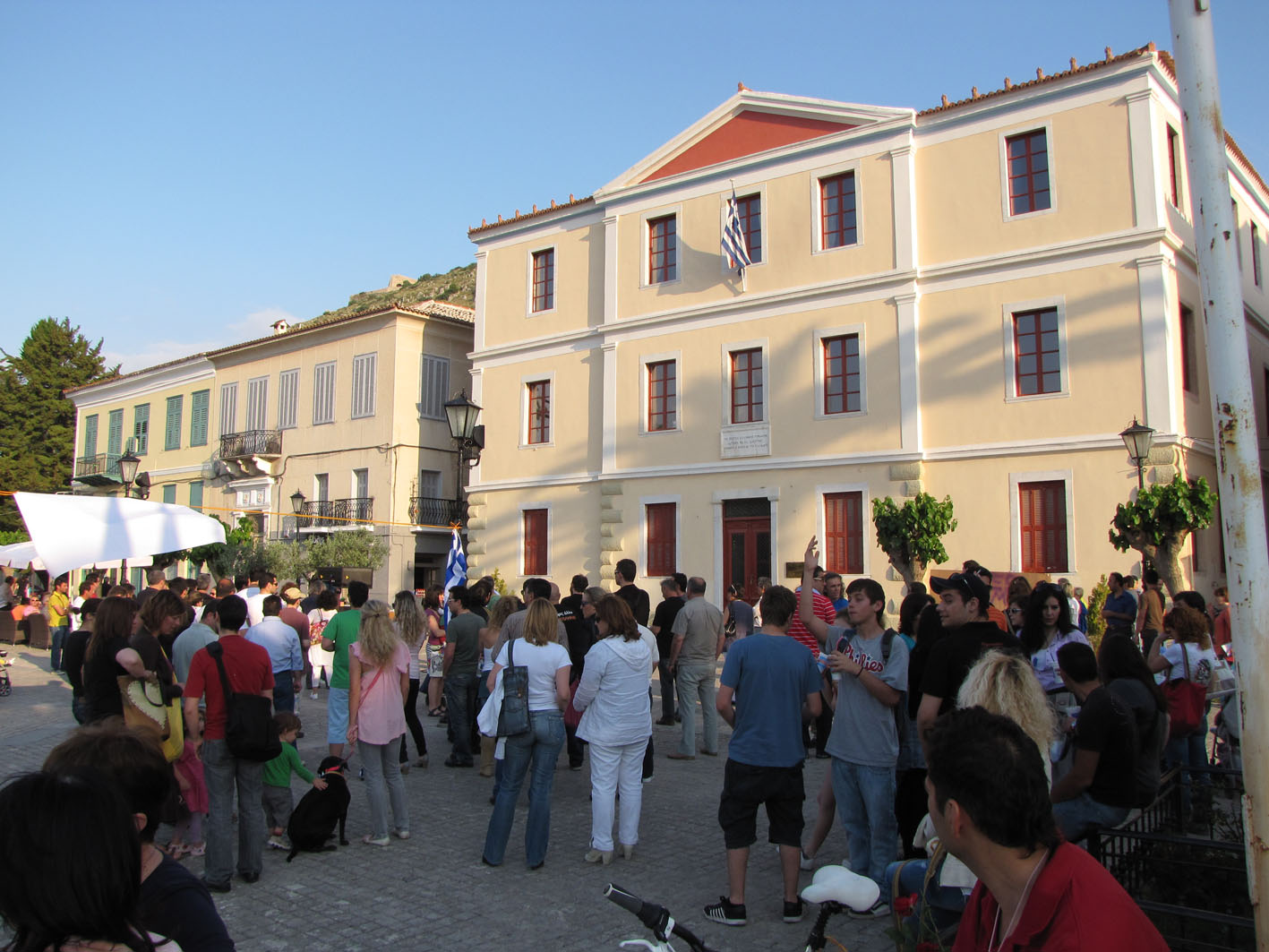
The Square of The Three Admirals (Plateia Trion Navarchon) is dedicated to the memory of Admirals, Kodrigkton of England, Drigny of and Xeiden of Russia, who fighted the Turkish-Egyptian fleet at the Battle of Navarino on 8 October 1827.
The square was formed in the days of Ioannis Kapodistrias, by the engineer Stamatis Voulgaris and includes important buildings and monuments.
The Square of The Three Admirals (Plateia Trion Navarchon) is dedicated to the memory of Admirals, Kodrigkton of England, Drigny of and Xeiden of Russia, who fighted the Turkish-Egyptian fleet at the Battle of Navarino on 8 October 1827.
The square was formed in the days of Ioannis Kapodistrias, by the engineer Stamatis Voulgaris and includes important buildings and monuments.
In the middle of the square stands the tomb monument containing the bones of Demetrius Ypsilantis, who was one of the leading figures of the Hellenic Revolution. Ypsilantis, who died in Nauplion in 1832 hit by hereditary disease at age 40, was originally buried in the narthex of the church of St. George. But in 1843, his bones were deposited with an official ceremony, to this monument which was built in Vienna, at the request of his brother, George Ypsilantis.
In the square there are notable neoclassical buildings, of which stands the building that now houses the Town Hall. Next, on Basileos Constantine Str. 32, was the pharmacy of the Italian philhellene Bonifaccio Bonafin who embalmed the dead body of the murdered gorvernor Ioannis Kapodistrias.
Behind the monument of Ypsilantis, in the western part of the square, one can see the statue of the first King of Greece, Otto, second son of King Ludwig of Bavaria. The young king landed at Nauplion on 25 January 1833, and stayed briefly in the city until 1834.
Approximately at the location installed the statue of Otto, between the streets Basileos Constantine and Amalias, was formerly one of the most important buildings of Nafplion, the Kyverneio (Governorate) or "Palataki", which was destroyed by fire in 1929. Kyverneio constructed in 1829, exactly one hundred years before its destruction, designed by the Italian architect Pasquale Ippoliti, to house the offices of the newly formed Greek government and the home of the first Governor of Greece, Ioannis Kapodistrias.
The Square of The Three Admirals (Plateia Trion Navarchon) is dedicated to the memory of Admirals, Kodrigkton of England, Drigny of and Xeiden of Russia, who fighted the Turkish-Egyptian fleet at the Battle of Navarino on 8 October 1827.
The square was formed in the days of Ioannis Kapodistrias, by the engineer Stamatis Voulgaris and includes important buildings and monuments.
In the middle of the square stands the tomb monument containing the bones of Demetrius Ypsilantis, who was one of the leading figures of the Hellenic Revolution. Ypsilantis, who died in Nauplion in 1832 hit by hereditary disease at age 40, was originally buried in the narthex of the church of St. George. But in 1843, his bones were deposited with an official ceremony, to this monument which was built in Vienna, at the request of his brother, George Ypsilantis.
In the square there are notable neoclassical buildings, of which stands the building that now houses the Town Hall. Next, on Basileos Constantine Str. 32, was the pharmacy of the Italian philhellene Bonifaccio Bonafin who embalmed the dead body of the murdered gorvernor Ioannis Kapodistrias.
Behind the monument of Ypsilantis, in the western part of the square, one can see the statue of the first King of Greece, Otto, second son of King Ludwig of Bavaria. The young king landed at Nauplion on 25 January 1833, and stayed briefly in the city until 1834.
Approximately at the location installed the statue of Otto, between the streets Basileos Constantine and Amalias, was formerly one of the most important buildings of Nafplion, the Kyverneio (Governorate) or "Palataki", which was destroyed by fire in 1929. Kyverneio constructed in 1829, exactly one hundred years before its destruction, designed by the Italian architect Pasquale Ippoliti, to house the offices of the newly formed Greek government and the home of the first Governor of Greece, Ioannis Kapodistrias.
Its erection became even at the expense of himself the Governor, but also by sponsoring of expatriate Greeks. Both its architectural appearance and the interior exuded simplicity. It was a neoclassical building, with a pronounced horizontal axis. Inside the impression caused by the simple furnishing, after the order of the Governor himself.
When Kapodistrias was murdered here in the central hall of Kyverneio, was placed his embalmed body on popular pilgrimage shrine.
When the young King Otto arrived in Nafplio, he stayed, also, in Kyverneio. Then the Kyverneio named 'Royal Palace', while the people called it "Palataki" (Small Palace) name by which it became known today.
|



